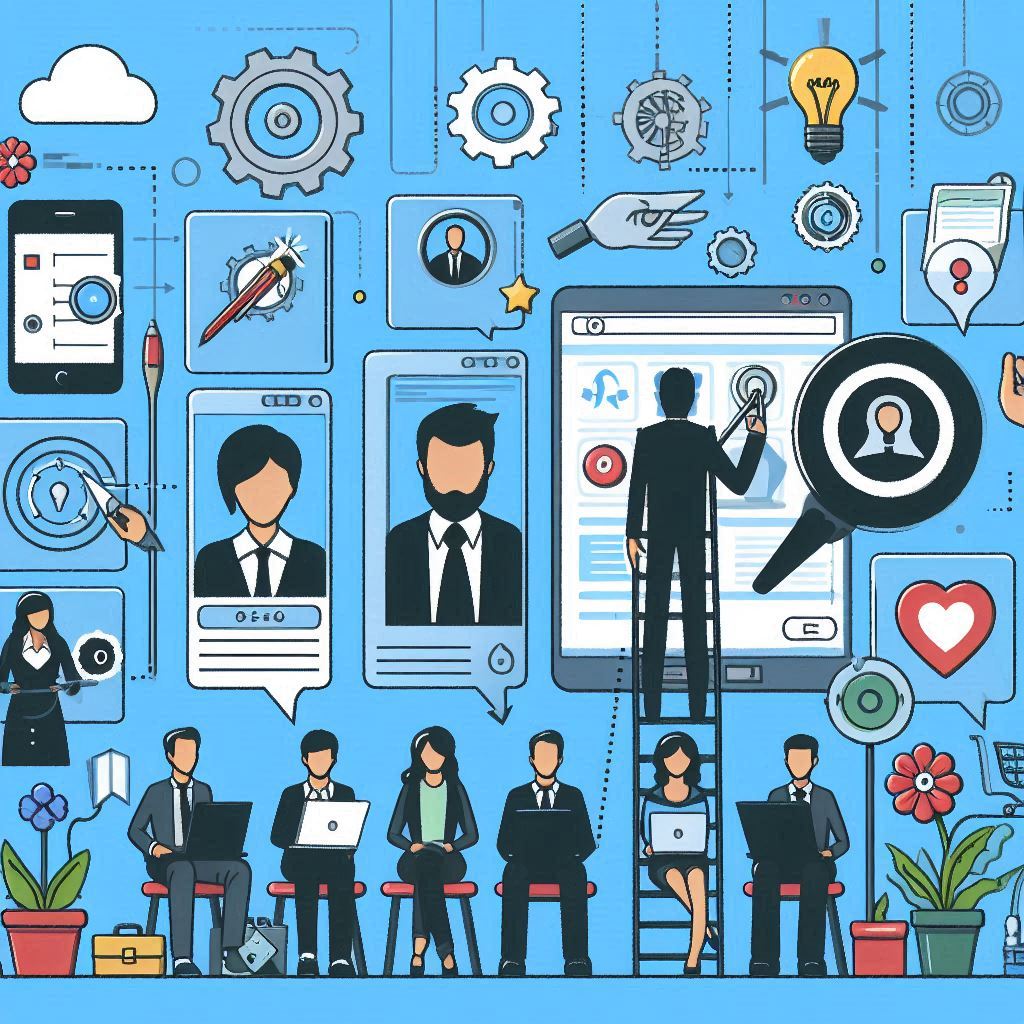Best Practices for Software Development Documentation Effective documentation is a crucial aspect of software development that can significantly enhance communication, collaboration, and overall project success. Well-structured documentation helps developers, stakeholders, and users understand the software, its architecture, and its functionalities. This article outlines best practices for creating and maintaining software development documentation. 1. Define Clear Documentation Goals Identify Your Audience Understand who will be using the documentation, whether they are developers, project managers, testers, or end-users. Tailoring the content to meet the specific needs of each audience will improve its effectiveness. Set Documentation Objectives Clearly define what you want to achieve with your documentation. Objectives might include improving onboarding for new developers, providing reference materials for end-users, or outlining processes for stakeholders. 2. Establish a Documentation Structure Create a Consistent Format Use a consistent format and style across all documentation to make it easier for readers to navigate. Establish templates for different types of documents (e.g., requirements, design documents, user manuals) to ensure uniformity. Organize Content Logically Structure documentation in a logical order, grouping related topics together. Use a clear hierarchy with headings, subheadings, and bullet points to break up content and enhance readability. Implement Version Control Utilize version control systems to manage documentation changes over time. This allows teams to track revisions, maintain historical records, and ensure that everyone is using the most current version. 3. Utilize Collaborative Tools Leverage Documentation Platforms Use collaborative documentation tools such as Confluence, Notion, or Google Docs to facilitate real-time collaboration among team members. These tools allow for easy sharing, commenting, and editing. Incorporate Code Comments Encourage developers to add comments directly in the code to explain complex logic or functionality. This practice aids in maintaining documentation that is up-to-date with the latest code changes. 4. Focus on Clarity and Conciseness Use Clear Language Avoid jargon and overly technical language unless it is appropriate for the target audience. Aim for clarity and simplicity to ensure that all users can easily understand the documentation. Be Concise Strive for brevity in documentation while covering essential information. Eliminate unnecessary words and focus on delivering valuable content that serves the reader’s needs. 5. Incorporate Visual Aids Use Diagrams and Flowcharts Incorporate visual aids such as flowcharts, diagrams, and screenshots to complement written content. Visuals can simplify complex concepts and improve understanding. Utilize Examples and Use Cases Provide practical examples and use cases to illustrate how the software works in real-world scenarios. This helps users grasp the application’s functionalities and use it more effectively. 6. Maintain Up-to-Date Documentation Regularly Review and Update Set a schedule for reviewing and updating documentation to ensure its accuracy and relevance. Assign responsibility for specific documents to team members to promote accountability. Solicit Feedback Encourage users to provide feedback on the documentation. Use surveys or informal discussions to gather insights about what works well and what could be improved. 7. Create Comprehensive User Guides Develop User Manuals Create detailed user manuals that cover installation, configuration, and usage instructions. Include troubleshooting tips and FAQs to assist users in resolving common issues. Include API Documentation For software that offers APIs, provide thorough API documentation that outlines endpoints, request and response formats, and authentication methods. This is crucial for developers integrating with your software. 8. Implement Change Logs Maintain a Change Log Keep a detailed change log to document updates, enhancements, and bug fixes. This allows users to track the evolution of the software and understand the impact of changes. Highlight Major Changes In your change log, clearly highlight significant updates or new features to draw attention to important information for users and stakeholders. 9. Encourage Knowledge Sharing Promote Documentation Culture Foster a culture that values documentation by encouraging team members to contribute and share knowledge. Recognize and reward those who actively maintain and improve documentation. Host Documentation Workshops Conduct workshops or training sessions to help team members understand best practices for documentation. This can enhance their skills and promote collaboration. 10. Conclusion Effective documentation is a cornerstone of successful software development. By following these best practices, software teams can create comprehensive, clear, and user-friendly documentation that enhances collaboration, supports users, and ensures long-term project success. Investing time and effort into maintaining high-quality documentation not only improves team efficiency but also enhances user experience and satisfaction, ultimately contributing to the overall success of the software product.
How to Develop a Customer-Centric Culture in Software Companies
How to Develop a Customer-Centric Culture in Software Companies In today’s competitive software landscape, companies must prioritize their customers to succeed. A customer-centric culture focuses on understanding and meeting the needs of customers throughout their journey, ultimately leading to increased satisfaction, loyalty, and business growth. This article outlines actionable steps to develop a customer-centric culture in software companies. 1. Define Your Customer-Centric Vision Establish Core Values Begin by defining core values that emphasize the importance of customer satisfaction and service. Make these values visible in company communications and integrate them into performance metrics. Create a Customer-Centric Mission Statement Develop a mission statement that highlights your commitment to customers. This statement should serve as a guiding principle for all employees, reminding them that customer needs are the top priority. Engage Leadership Ensure that leadership is aligned with the customer-centric vision. Leaders should model customer-focused behaviors and encourage their teams to adopt a similar mindset. 2. Foster a Deep Understanding of Customers Conduct User Research Invest in comprehensive user research to gather insights about customer needs, preferences, and pain points. Use surveys, interviews, and focus groups to collect qualitative data, and analyze user behavior through analytics tools. Create User Personas Develop detailed user personas that represent different segments of your customer base. These personas should include demographic information, goals, challenges, and usage patterns, helping teams understand who their customers are and what they need. Incorporate Customer Feedback Establish mechanisms for collecting ongoing customer feedback, such as surveys, feedback forms, and user interviews. Regularly analyze this feedback to identify trends and areas for improvement. 3. Empower Employees to Deliver Exceptional Customer Experiences Train and Educate Employees Provide training programs that emphasize the importance of customer service and equip employees with the skills to address customer needs effectively. Topics can include communication skills, empathy, conflict resolution, and product knowledge. Encourage Autonomy Empower employees to make decisions that benefit customers. Giving them the authority to resolve issues quickly without excessive bureaucracy enhances the customer experience and builds employee confidence. Recognize and Reward Customer-Centric Behavior Create recognition programs that reward employees who demonstrate exceptional customer service. Celebrating successes can motivate others to prioritize customer needs. 4. Integrate Customer-Centric Practices into Processes Align Teams Around Customer Goals Break down silos between departments by fostering cross-functional collaboration. Encourage teams to work together on projects with a shared focus on customer outcomes. Implement Agile Methodologies Adopting agile methodologies can help teams respond to customer feedback more rapidly. Regular iterations and continuous delivery enable organizations to remain flexible and adjust based on user needs. Utilize Customer Journey Mapping Create customer journey maps to visualize the entire customer experience, from awareness to post-purchase support. Identifying touchpoints where customers interact with your software can reveal opportunities for improvement. 5. Leverage Technology to Enhance Customer Engagement Invest in Customer Relationship Management (CRM) Tools Implement CRM systems to centralize customer data and interactions. This allows teams to track customer engagement, manage relationships, and personalize communication. Utilize Analytics for Insights Leverage analytics tools to gain insights into user behavior, feature usage, and satisfaction levels. Data-driven decision-making can help prioritize development efforts based on customer needs. Provide Multiple Support Channels Offer various customer support channels, such as chatbots, forums, and email support, to accommodate different customer preferences. Ensure that customers can easily reach out for assistance. 6. Measure Success and Continuously Improve Set Key Performance Indicators (KPIs) Establish KPIs to measure customer satisfaction, retention, and engagement. Metrics such as Net Promoter Score (NPS), Customer Satisfaction Score (CSAT), and Customer Lifetime Value (CLV) can help assess the effectiveness of customer-centric initiatives. Gather and Analyze Feedback Regularly Conduct regular surveys and interviews to gather feedback on customer experiences and satisfaction. Analyze this data to identify trends and areas for improvement. Iterate and Adapt Use feedback and performance metrics to iterate on your processes and practices continually. Foster a culture of continuous improvement, where learning from customer interactions informs future decisions. 7. Conclusion Developing a customer-centric culture in software companies requires commitment, collaboration, and ongoing effort. By defining a clear vision, fostering employee empowerment, integrating customer insights into processes, leveraging technology, and measuring success, companies can create a culture that prioritizes customer needs. In an environment where customer expectations are constantly evolving, organizations that invest in understanding and meeting those needs will ultimately thrive. A customer-centric culture not only enhances customer satisfaction and loyalty but also drives innovation and growth, positioning the company for long-term success.
The Role of Data Privacy in Software Development
The Role of Data Privacy in Software Development In an increasingly digital world, data privacy has become a paramount concern for both consumers and businesses. With growing awareness of data breaches and misuse of personal information, integrating data privacy into software development processes is no longer optional—it’s essential. This article explores the critical role of data privacy in software development, the implications of non-compliance, and best practices for safeguarding user data. 1. Understanding Data Privacy Definition of Data Privacy Data privacy refers to the proper handling, processing, storage, and sharing of personal information. It encompasses the rights of individuals to control their personal data and the obligations of organizations to protect that data from unauthorized access and misuse. Importance of Data Privacy Data privacy is crucial for maintaining trust between users and software providers. When users feel confident that their data is handled responsibly, they are more likely to engage with the software and share their information. Conversely, data breaches or mishandling can lead to reputational damage, legal repercussions, and financial losses. 2. Legal and Regulatory Considerations Compliance with Regulations Software developers must be aware of various data privacy regulations that govern the collection and use of personal data. Some notable regulations include: General Data Protection Regulation (GDPR): A comprehensive regulation in the EU that mandates strict data protection measures for businesses processing personal data of EU citizens. California Consumer Privacy Act (CCPA): A state law that enhances privacy rights and consumer protection for residents of California. Health Insurance Portability and Accountability Act (HIPAA): A US regulation that sets standards for the protection of health information. Non-compliance with these regulations can result in significant fines and legal action, emphasizing the need for data privacy in software development. Understanding User Rights Data privacy regulations typically grant users certain rights, such as the right to access their data, the right to deletion, and the right to opt out of data processing. Software developers must ensure that their applications respect these rights and provide mechanisms for users to exercise them. 3. Integrating Data Privacy in Software Development Adopting a Privacy-by-Design Approach Implementing a privacy-by-design approach means incorporating data privacy considerations into every stage of the software development lifecycle. This proactive approach ensures that privacy is built into the architecture, design, and functionality of the software from the outset. Conducting Privacy Impact Assessments (PIAs) Before launching a new feature or product, conducting a Privacy Impact Assessment (PIA) can help identify potential privacy risks and mitigation strategies. This process evaluates how user data will be collected, stored, processed, and shared, enabling teams to address concerns proactively. Implementing Data Minimization Data minimization involves collecting only the data necessary for the intended purpose and eliminating any unnecessary data collection. This principle not only enhances user privacy but also reduces the potential risks associated with data breaches. 4. Ensuring Data Security Implementing Robust Security Measures Data privacy and data security go hand in hand. Software developers should implement robust security measures, such as encryption, secure access controls, and regular security audits, to protect user data from unauthorized access and breaches. Regular Software Updates Keeping software up to date is vital for maintaining data security. Regular updates address vulnerabilities, enhance security protocols, and ensure compliance with the latest data privacy regulations. Employee Training Educating employees about data privacy best practices is essential for minimizing risks. Regular training sessions should cover topics such as secure data handling, recognizing phishing attempts, and understanding the importance of data privacy in software development. 5. Building User Trust Transparency in Data Practices Being transparent about data collection, processing, and sharing practices fosters user trust. Software applications should include clear privacy policies that explain how user data is handled, the purpose of data collection, and users’ rights regarding their data. User Control Over Data Empowering users with control over their data enhances trust and satisfaction. Providing easy-to-use features that allow users to manage their data—such as opting out of data collection or deleting their accounts—can strengthen user confidence in the software. Responsive Customer Support Offering responsive customer support regarding data privacy inquiries and concerns demonstrates a commitment to user privacy. Providing users with timely assistance fosters a positive relationship and builds trust in the software. 6. Conclusion Data privacy is a critical aspect of software development that cannot be overlooked. As users become increasingly aware of their rights and the risks associated with data breaches, software developers must prioritize data privacy in their processes. By adopting a privacy-by-design approach, ensuring compliance with regulations, implementing robust security measures, and fostering user trust through transparency, software companies can create products that protect user data and enhance customer satisfaction. Ultimately, prioritizing data privacy not only helps mitigate risks but also serves as a competitive advantage in the evolving digital landscape.
How to Use Online Forums for Customer Support in Software
How to Use Online Forums for Customer Support in Software In today’s digital age, online forums have become a powerful tool for customer support in the software industry. They offer a platform for users to ask questions, share experiences, and find solutions to common problems. By leveraging online forums, software companies can enhance customer support, foster community engagement, and reduce support costs. This article outlines effective strategies for using online forums to provide exceptional customer support for software products. 1. Setting Up the Forum Choose the Right Platform Select a forum platform that aligns with your company’s needs and user preferences. Popular options include Discourse, phpBB, and Vanilla Forums. Consider factors like ease of use, customization options, mobile accessibility, and integration capabilities with your existing systems. Create a User-Friendly Interface Design the forum with a user-friendly interface that makes it easy for users to navigate, search for topics, and post questions. Use clear categories and tags to organize discussions, making it easier for users to find relevant information quickly. Implement User Registration and Profiles Require users to register before participating in the forum. This helps build a community, and registered users can create profiles that display their contributions, enhancing engagement and accountability. 2. Encouraging Community Participation Promote the Forum Inform your users about the forum through various channels, such as email newsletters, in-app notifications, and social media. Highlight the benefits of using the forum, including access to peer support, community-driven solutions, and direct engagement with your team. Create Engaging Content Encourage participation by posting engaging content, such as tutorials, FAQs, best practices, and feature highlights. Consider creating “sticky” threads for frequently asked questions to provide quick access to essential information. Host Q&A Sessions and Webinars Regularly host live Q&A sessions or webinars on relevant topics. This not only encourages participation but also allows users to ask questions directly, fostering a sense of community and collaboration. 3. Facilitating Effective Support Monitor and Moderate Discussions Assign moderators to oversee forum discussions, ensuring that conversations remain respectful and on-topic. Moderators can also help answer questions, guide users to relevant resources, and facilitate discussions. Encourage Knowledge Sharing Empower experienced users and community members to share their knowledge by encouraging them to answer questions and contribute to discussions. Recognize and reward active contributors through badges or special titles to motivate participation. Utilize a Tagging System Implement a tagging system for topics and questions. Tags help users find related content quickly and enable your support team to track common issues and emerging trends. 4. Integrating the Forum with Customer Support Link to Support Resources Integrate the forum with your existing customer support resources, such as knowledge bases, documentation, and ticketing systems. Provide links to relevant articles or guides within forum threads to direct users to comprehensive solutions. Escalation Procedures Establish clear escalation procedures for unresolved issues discussed in the forum. If a community member cannot find a solution, allow them to escalate their question to your support team for further assistance. Collect User Feedback Regularly solicit feedback from forum users to improve the support experience. Use surveys or polls to gather insights on user satisfaction, suggested features, and areas for improvement. 5. Analyzing Forum Performance Track Engagement Metrics Monitor key metrics such as user registration rates, post counts, response times, and user satisfaction scores. Analyzing these metrics can help you understand how well the forum is serving its purpose and identify areas for enhancement. Identify Common Issues Use the forum as a valuable source of data for identifying common issues faced by users. Analyzing discussions can reveal patterns that inform product improvements, documentation updates, and support strategies. Adapt Based on Feedback Regularly review user feedback and performance metrics to adapt your forum strategy. Make necessary adjustments to improve user experience, engagement, and support effectiveness. 6. Conclusion Online forums are a powerful tool for enhancing customer support in the software industry. By creating a user-friendly platform, encouraging community participation, and integrating the forum with existing support resources, software companies can provide exceptional support while fostering user engagement. The iterative nature of forums allows for continuous improvement and knowledge sharing among users, ultimately leading to a more satisfied customer base. By leveraging the collective wisdom of the community and actively participating in discussions, businesses can better meet customer needs and improve their software products over time.
The Importance of Iterative Development in Meeting User Needs
The Importance of Iterative Development in Meeting User Needs In today’s fast-paced digital landscape, the ability to adapt to user needs quickly is vital for the success of any software project. Iterative development is an approach that emphasizes continuous improvement through repeated cycles (or iterations) of development and feedback. This methodology plays a crucial role in aligning software products with user requirements and expectations, ensuring that the final product not only meets but exceeds user needs. This article explores the importance of iterative development in meeting user needs and outlines best practices for its implementation. 1. Understanding Iterative Development Definition Iterative development is a process that breaks down a project into smaller segments, allowing teams to develop, test, and refine features in cycles. Each iteration typically includes planning, design, coding, testing, and review, enabling teams to respond quickly to user feedback and changing requirements. Agile Methodologies Iterative development is often associated with agile methodologies, such as Scrum or Kanban. These frameworks promote flexibility, collaboration, and rapid iteration, making them ideal for projects with evolving user needs. 2. Adapting to User Feedback Continuous User Involvement One of the key advantages of iterative development is the emphasis on continuous user involvement. By engaging users throughout the development process, teams can gather valuable feedback and insights that inform subsequent iterations. Rapid Prototyping In each iteration, teams can create prototypes or minimum viable products (MVPs) that demonstrate specific features. Users can interact with these prototypes, providing immediate feedback on functionality, usability, and design. This hands-on approach ensures that the development aligns with user expectations. Adjusting Based on Feedback Iterative development allows teams to adjust their course based on user feedback quickly. If a feature does not resonate with users, it can be modified or replaced in subsequent iterations. This adaptability helps prevent costly mistakes and ensures that the final product is user-centric. 3. Reducing Risks and Uncertainties Identifying Issues Early By breaking down the development process into smaller iterations, teams can identify potential issues early on. Regular testing and feedback loops allow for the detection of bugs, usability problems, or design flaws before they escalate into major challenges. Minimizing Scope Creep Iterative development helps manage scope creep by focusing on specific features in each iteration. Teams can prioritize user needs, ensuring that only the most valuable features are included in the final product. This focused approach reduces the risk of overwhelming the development team with constantly changing requirements. Building Confidence with Incremental Releases Regular incremental releases foster trust between the development team and stakeholders. By demonstrating progress and incorporating user feedback, teams build confidence in their ability to deliver a product that meets user needs. 4. Enhancing Collaboration and Communication Cross-Functional Teams Iterative development encourages collaboration among cross-functional teams, including developers, designers, product managers, and stakeholders. This diverse input leads to a more holistic understanding of user needs and fosters creativity in problem-solving. Regular Check-Ins and Reviews Frequent check-ins and reviews are integral to iterative development. Teams can assess progress, discuss challenges, and realign on objectives. This collaborative environment fosters open communication, ensuring that everyone is on the same page. Cultivating a User-Centric Culture Iterative development instills a user-centric culture within the organization. By prioritizing user feedback and involving users in the development process, teams become more attuned to customer needs, ultimately resulting in better products. 5. Fostering Continuous Improvement Learning from Each Iteration Each iteration presents an opportunity for learning and improvement. Teams can reflect on what worked well and what did not, using these insights to refine their processes, tools, and strategies. Adapting to Market Changes In an ever-changing market, the ability to pivot quickly is crucial. Iterative development allows teams to respond to emerging trends, changing user needs, and competitive pressures by adjusting their development focus as needed. Emphasizing Quality Regular testing and feedback loops enhance the overall quality of the software. By addressing issues iteratively, teams can deliver a polished final product that meets user expectations and is free of critical bugs. 6. Conclusion Iterative development is essential for meeting user needs in today’s dynamic software landscape. By emphasizing continuous feedback, collaboration, and adaptability, this approach ensures that development aligns closely with user expectations. As businesses strive to create products that resonate with their users, embracing iterative development will lead to more effective and user-centered outcomes. By prioritizing user involvement and fostering a culture of continuous improvement, organizations can enhance their ability to deliver software solutions that not only meet but exceed customer needs and expectations.
How to Align Software Development with Customer Expectations
How to Align Software Development with Customer Expectations In today’s competitive landscape, aligning software development with customer expectations is crucial for delivering successful products and ensuring customer satisfaction. Misalignment can lead to wasted resources, delayed releases, and ultimately dissatisfied customers. This article outlines effective strategies to bridge the gap between software development and customer expectations, ensuring that the end product meets or exceeds user needs. 1. Understanding Customer Needs Conduct Market Research Before starting any development project, conduct thorough market research to understand customer needs, preferences, and pain points. Utilize surveys, interviews, and focus groups to gather qualitative and quantitative data about your target audience. Develop User Personas Creating detailed user personas helps teams visualize their target users. These personas should include demographic information, behaviors, motivations, and specific challenges customers face. User personas provide context for development teams, guiding design and feature prioritization. Gather Customer Feedback Continuous feedback from customers during the development process is essential. Utilize tools like surveys and feedback forms to gather insights on current products and identify areas for improvement. Engage customers in discussions about their expectations to create a customer-centric approach. 2. Establish Clear Communication Channels Foster Cross-Functional Collaboration Encourage collaboration between different departments, including marketing, sales, and customer support. Cross-functional teams can share valuable insights from customer interactions, ensuring that development efforts align with market needs. Maintain Open Lines of Communication Establish regular communication between the development team and customers. Utilize tools like Slack, project management software, or dedicated feedback platforms to facilitate ongoing discussions and updates. Use Agile Methodologies Adopting agile development methodologies allows for iterative feedback and improvement. By working in sprints, development teams can incorporate customer feedback into each iteration, ensuring that the product aligns closely with expectations. 3. Set Clear Expectations Define Requirements Clearly Create a comprehensive product requirements document that outlines the project’s scope, features, and functionalities. Ensure all stakeholders, including customers, have input during this process to avoid misunderstandings. Involve Customers in Planning Invite key customers to participate in planning sessions. Their insights can provide valuable direction on feature prioritization and design considerations. By involving customers early on, you can align development efforts with their expectations. Regularly Update Customers Keep customers informed about the development progress, potential changes, and timelines. Regular updates help manage expectations and ensure customers remain engaged and supportive of the project. 4. Implement Quality Assurance Practices Incorporate User Testing Integrate user testing throughout the development process. By involving actual users in testing phases, teams can identify usability issues, bugs, and gaps between customer expectations and the delivered product. Utilize A/B Testing Conduct A/B testing to evaluate different versions of features or designs. This data-driven approach allows teams to determine which option resonates better with customers, enabling informed decisions about final implementations. Emphasize Continuous Improvement Establish a culture of continuous improvement within the development team. Encourage regular reflection on processes, methodologies, and customer feedback to identify areas for enhancement. 5. Deliver a Seamless User Experience Focus on Usability Prioritize usability in software design and development. Ensure that the user interface is intuitive, with clear navigation and responsive design. Conduct usability tests to validate design choices and gather feedback for refinement. Optimize Performance Ensure that the software performs efficiently, with fast load times and minimal downtime. Regularly monitor system performance and user satisfaction to identify areas for optimization. Provide Comprehensive Documentation Create clear and concise documentation for end-users, including user guides, FAQs, and support resources. Well-organized documentation enhances the user experience and reduces frustration when navigating the software. 6. Measure Success Define Key Performance Indicators (KPIs) Establish KPIs to measure the success of the software in meeting customer expectations. Common metrics include customer satisfaction scores, Net Promoter Scores (NPS), and user engagement rates. Collect Feedback Post-Launch After the software is released, continue to gather feedback from users. Monitor reviews, support tickets, and direct feedback to identify areas for improvement and gauge overall customer satisfaction. Iterate Based on Feedback Utilize the feedback collected to drive continuous enhancements to the software. Regular updates based on user insights demonstrate a commitment to customer satisfaction and help maintain loyalty. 7. Conclusion Aligning software development with customer expectations is essential for delivering successful products that resonate with users. By understanding customer needs, establishing clear communication, implementing quality assurance practices, and focusing on usability, businesses can bridge the gap between development and customer satisfaction. Continuous engagement with customers and a commitment to improvement will ensure that software products not only meet but exceed customer expectations. In a rapidly evolving digital landscape, prioritizing alignment with customer needs will ultimately lead to long-term success and a loyal user base.
The Role of Technology in Enhancing Customer Loyalty
The Role of Technology in Enhancing Customer Loyalty In today’s competitive marketplace, customer loyalty is more crucial than ever for the success and sustainability of businesses. As consumers have access to a multitude of options, companies must find innovative ways to foster loyalty among their customers. Technology plays a pivotal role in enhancing customer loyalty by providing tools and strategies that facilitate personalized experiences, streamline communication, and improve overall satisfaction. This article explores the various ways technology contributes to customer loyalty and the best practices for leveraging it effectively. 1. Personalization through Data Analytics Understanding Customer Behavior Technology enables businesses to gather and analyze vast amounts of customer data. By employing data analytics, companies can gain insights into customer preferences, purchasing behavior, and feedback patterns. This information helps organizations understand their customers on a deeper level, allowing them to tailor experiences that resonate with individual needs. Personalized Marketing With data-driven insights, businesses can create targeted marketing campaigns that speak directly to customer interests. For instance, personalized email marketing can suggest products based on past purchases or browsing history, significantly increasing engagement and conversion rates. This level of personalization makes customers feel valued, fostering loyalty. Dynamic Pricing Strategies Technology allows for dynamic pricing strategies, where prices can be adjusted based on demand, customer behavior, and market trends. By offering personalized discounts or loyalty rewards, businesses can encourage repeat purchases and enhance customer retention. 2. Omni-Channel Engagement Seamless Customer Experience Customers today interact with brands across multiple channels, including websites, social media, email, and in-store. Technology enables businesses to create a seamless omni-channel experience, allowing customers to engage with the brand at their convenience. Consistent Communication Maintaining consistent communication across all channels is essential for building trust and loyalty. Customer Relationship Management (CRM) systems can track interactions and ensure that customers receive relevant information regardless of the channel they choose to engage with. Social Media Interaction Social media platforms provide an avenue for real-time interaction with customers. Businesses can use social listening tools to monitor conversations about their brand, respond to inquiries promptly, and engage with customers directly. This level of engagement can strengthen the emotional connection between customers and the brand. 3. Loyalty Programs and Rewards Digital Loyalty Programs Technology has revolutionized loyalty programs by making them more accessible and user-friendly. Mobile apps and websites allow customers to easily track their points, rewards, and available offers. This convenience encourages customers to engage more frequently with the brand. Gamification Elements Incorporating gamification elements into loyalty programs, such as badges, levels, and challenges, can make the experience more engaging. Customers are motivated to participate actively and strive to earn rewards, which fosters a sense of community and loyalty. Exclusive Offers Leveraging technology enables businesses to provide personalized offers and exclusive rewards to loyal customers. By using customer data to identify high-value customers, companies can target them with special promotions that enhance their sense of appreciation and loyalty. 4. Enhanced Customer Support 24/7 Accessibility Technology allows businesses to offer round-the-clock customer support through chatbots and AI-driven solutions. These tools can handle routine inquiries, freeing human agents to focus on more complex issues. Providing instant support fosters customer trust and satisfaction, which is crucial for loyalty. Knowledge Management Systems Investing in knowledge management systems helps organizations create and maintain comprehensive self-service resources. Customers can access FAQs, tutorials, and guides at any time, empowering them to solve issues independently. This self-sufficiency enhances the overall customer experience. Proactive Support Advanced analytics can help identify potential customer issues before they escalate. By utilizing predictive analytics, businesses can anticipate customer needs and offer proactive support, enhancing the customer experience and reinforcing loyalty. 5. Feedback and Continuous Improvement Real-Time Feedback Mechanisms Technology facilitates the collection of real-time feedback through surveys, ratings, and reviews. By actively seeking customer input, businesses can identify areas for improvement and address concerns swiftly, demonstrating their commitment to customer satisfaction. Sentiment Analysis Using sentiment analysis tools, businesses can gauge customer sentiment from various sources, including social media and online reviews. This understanding allows companies to make informed adjustments to their products, services, and overall customer experience. Iterative Improvements Regularly analyzing feedback enables organizations to implement iterative improvements to their offerings. By showing customers that their opinions matter and leading to tangible changes, businesses can strengthen loyalty and retention. 6. Conclusion Technology plays a vital role in enhancing customer loyalty by enabling personalization, facilitating seamless engagement, and providing superior support. By leveraging data analytics, businesses can understand their customers better and create tailored experiences that resonate with their needs and preferences. Moreover, implementing digital loyalty programs, maintaining consistent communication across channels, and proactively seeking feedback fosters a sense of belonging and trust among customers. In an increasingly competitive landscape, businesses that harness technology to enhance customer loyalty will not only retain their existing customer base but also attract new customers, ensuring long-term success and growth.
How to Use Analytics to Improve Customer Support
How to Use Analytics to Improve Customer Support In today’s digital landscape, data-driven decision-making is paramount for businesses looking to enhance customer support. By leveraging analytics, organizations can gain valuable insights into customer behavior, identify areas for improvement, and optimize support processes. This article outlines how to effectively use analytics to improve customer support, ultimately leading to increased customer satisfaction and loyalty. 1. Understanding Customer Support Analytics Definition Customer support analytics refers to the process of collecting, analyzing, and interpreting data related to customer interactions and support activities. This data can come from various sources, including support tickets, chat logs, customer surveys, and social media interactions. Key Metrics to Track To effectively utilize analytics, it’s essential to focus on key metrics, such as: First Response Time (FRT): The time taken to respond to a customer’s initial inquiry. Average Resolution Time (ART): The average time it takes to resolve a customer issue. Customer Satisfaction Score (CSAT): A metric that measures customer satisfaction with support interactions. Net Promoter Score (NPS): A measure of customer loyalty and the likelihood of recommending the service to others. Ticket Volume: The number of support tickets generated over a specific period. 2. Collecting Relevant Data Use Multiple Data Sources To gain a comprehensive understanding of customer support performance, gather data from various channels, including: Help Desk Software: Collect data from ticketing systems to analyze trends in support requests. Customer Relationship Management (CRM) Systems: Use CRM data to track customer interactions and history. Live Chat and Chatbots: Analyze chat transcripts to identify common questions and issues. Social Media: Monitor social media platforms for customer feedback and support inquiries. Integrate Feedback Mechanisms Incorporate feedback mechanisms, such as post-interaction surveys or feedback forms, to gather insights directly from customers after support interactions. This qualitative data complements quantitative metrics and provides a deeper understanding of customer sentiments. 3. Analyzing Data for Insights Identify Trends and Patterns Use analytics tools to identify trends and patterns in customer support data. Look for: Common issues or frequently asked questions. Peaks in ticket volume during specific times or events. Patterns in customer behavior that correlate with satisfaction or dissatisfaction. Segment Customer Data Segment your data based on various criteria, such as customer demographics, purchase history, or support channel used. This segmentation allows for more targeted analysis and can help tailor support strategies to different customer groups. Utilize Data Visualization Tools Employ data visualization tools to present analytics in an easily digestible format. Graphs, charts, and dashboards can help stakeholders quickly understand trends, performance metrics, and areas for improvement. 4. Implementing Data-Driven Improvements Optimize Support Processes Use insights gained from analytics to streamline and optimize support processes. For example: Reduce FRT and ART: Identify bottlenecks in support workflows and implement strategies to improve response and resolution times. Automate Repetitive Tasks: Use chatbots and automation tools for common inquiries to free up support agents for more complex issues. Tailor Training Programs Analyze performance data to identify skill gaps within the support team. Develop targeted training programs to enhance the skills of support agents in areas where they may be lacking, improving overall service quality. Enhance Self-Service Options If data reveals that customers frequently ask similar questions, consider enhancing self-service options such as FAQs, knowledge bases, or tutorial videos. Providing comprehensive resources can empower customers to resolve issues independently, reducing support volume. 5. Monitoring and Adjusting Strategies Establish a Continuous Feedback Loop Create a culture of continuous improvement by regularly monitoring analytics and adjusting strategies based on real-time data. Schedule regular reviews of support metrics to assess progress and identify new opportunities for enhancement. Set Performance Benchmarks Establish performance benchmarks based on industry standards or historical data. Regularly compare your support metrics against these benchmarks to gauge performance and identify areas that require further attention. Engage with Customers Continue to engage with customers through surveys, feedback forms, and follow-ups to ensure their needs are being met. Analyzing ongoing customer feedback will provide valuable insights into the effectiveness of implemented changes. 6. Conclusion Utilizing analytics to improve customer support is a powerful strategy that can lead to significant enhancements in service quality and customer satisfaction. By collecting and analyzing relevant data, identifying trends, and implementing data-driven improvements, organizations can create a more efficient and responsive support system. Continuous monitoring and adjustment of support strategies based on analytics will foster a culture of improvement and customer-centricity. In a competitive landscape, leveraging analytics in customer support is not just an option; it is a necessity for organizations aiming to thrive and build lasting customer relationships.
The Importance of Quality Feedback in Software Testing
The Importance of Quality Feedback in Software Testing In the fast-paced world of software development, delivering high-quality products is essential for success. One of the most critical aspects of ensuring software quality is effective testing, which heavily relies on quality feedback. Feedback from testers, stakeholders, and end-users plays a vital role in identifying issues, improving functionality, and enhancing user satisfaction. This article explores the significance of quality feedback in software testing and how it can lead to superior software products. 1. Understanding Quality Feedback Definition Quality feedback refers to detailed, constructive, and actionable insights gathered during the software testing process. It encompasses information about bugs, usability issues, performance, and overall user experience. Key Characteristics Quality feedback should be: Specific: Clearly describe the issue, including steps to reproduce it. Constructive: Offer suggestions for improvement rather than just highlighting problems. Timely: Provide feedback during the testing phase to allow for quick resolutions. Relevant: Focus on aspects that directly impact the user experience and software functionality. 2. Benefits of Quality Feedback in Software Testing Early Detection of Issues Quality feedback helps identify bugs and defects early in the development process. Early detection reduces the cost and effort associated with fixing issues later, as problems can be addressed before they escalate. Improved Software Quality Constructive feedback allows development teams to refine and enhance software features. By understanding users’ needs and preferences, teams can make informed decisions that lead to higher-quality products. Enhanced User Experience Gathering feedback from actual users helps identify usability issues and areas for improvement. By prioritizing user feedback, development teams can create intuitive and user-friendly interfaces that enhance the overall user experience. Informed Decision-Making Quality feedback provides valuable insights that inform development and design decisions. Stakeholders can prioritize features and improvements based on the feedback received, ensuring that resources are allocated effectively. Increased Collaboration Encouraging feedback fosters a collaborative culture within the development team and among stakeholders. Open communication about issues and suggestions creates a sense of shared ownership and responsibility for the final product. 3. Sources of Quality Feedback Testers Software testers play a critical role in the feedback loop. They can provide detailed reports on bugs, performance issues, and usability challenges based on their testing experiences. Their insights are crucial for refining the software before it reaches the end-users. Stakeholders Involving stakeholders, such as product managers, business analysts, and designers, in the feedback process ensures that all perspectives are considered. Their insights can help align software features with business goals and user needs. End-Users Gathering feedback directly from end-users provides the most accurate representation of how the software performs in real-world scenarios. User feedback can be collected through surveys, interviews, and usability testing sessions. 4. Best Practices for Collecting Quality Feedback Create a Feedback Loop Establish a structured feedback loop that facilitates the collection, analysis, and implementation of feedback. Ensure that all team members understand the process and know how to provide feedback effectively. Utilize Testing Tools Leverage automated testing tools and bug tracking systems to streamline the feedback process. These tools can help categorize and prioritize feedback, making it easier for development teams to address issues. Encourage Open Communication Foster a culture of open communication where team members feel comfortable sharing their insights and suggestions. Regular check-ins, feedback sessions, and retrospectives can help maintain an open dialogue. Be Specific in Requests When requesting feedback, provide clear guidelines on what type of information is needed. Ask testers and users to focus on specific aspects, such as functionality, usability, and performance. Prioritize Feedback Not all feedback is created equal. Develop a system for prioritizing feedback based on its impact on user experience, functionality, and business objectives. Focus on addressing critical issues first. 5. Implementing Feedback in the Development Cycle Analyze Feedback Review and categorize the feedback collected to identify common themes and trends. Use this analysis to prioritize issues and determine which areas require immediate attention. Develop Action Plans Create action plans for addressing the feedback. Assign responsibilities to team members, set timelines for resolving issues, and track progress to ensure accountability. Communicate Changes Keep stakeholders and testers informed about the changes made in response to their feedback. This transparency builds trust and demonstrates that their insights are valued. Continuously Iterate Software development is an ongoing process. Continuously gather feedback even after the initial release to identify areas for further improvement. Regular updates and enhancements should be based on user feedback. 6. Conclusion Quality feedback is an essential component of software testing that significantly impacts the overall quality and user experience of software products. By prioritizing and actively seeking quality feedback from testers, stakeholders, and end-users, development teams can identify issues early, improve functionality, and create software that truly meets user needs. Implementing effective feedback mechanisms and fostering a culture of collaboration and communication can lead to enhanced software quality, increased user satisfaction, and long-term success in the competitive software market. Embracing the value of quality feedback is key to delivering exceptional software solutions that resonate with users and drive business growth.
How to Develop User Personas to Guide Software Features
How to Develop User Personas to Guide Software Features Creating user personas is a crucial step in understanding your target audience and designing software features that meet their needs. User personas are fictional characters that represent different segments of your user base, created based on real user data and research. By developing detailed personas, you can make informed decisions about feature development, prioritization, and overall user experience. In this article, we will explore the steps to create effective user personas and how they can guide your software features. 1. Conduct User Research Gather Data Begin by collecting quantitative and qualitative data about your users. This can include: Surveys: Conduct surveys to gather demographic information, user behavior, and preferences. Interviews: Conduct one-on-one interviews with existing users to gain insights into their needs, pain points, and goals. Analytics: Analyze user data from your software to identify patterns in usage, feature engagement, and user journeys. Focus Groups: Organize focus groups to discuss user experiences and gather diverse perspectives. Identify Key User Segments Based on the data collected, identify distinct user segments that share common characteristics. This could include factors such as demographics, goals, behaviors, and challenges. Grouping users into segments will help you develop more targeted personas. 2. Create Detailed User Personas Persona Template Develop a persona template that includes the following key components: Name: Give each persona a fictional name to humanize them. Demographics: Include age, gender, occupation, education level, and location. Background: Provide a brief description of the persona’s background, including relevant experiences and interests. Goals: Outline the primary goals the persona hopes to achieve using your software. Challenges: Identify the key challenges or pain points the persona faces that your software can address. Behavior Patterns: Describe how the persona interacts with technology, including preferred devices, platforms, and usage frequency. Motivations: Highlight what motivates the persona to use your software and what factors influence their decision-making. Quotes: Include direct quotes from user research to add authenticity and context to the persona. Example Persona Here’s an example of what a user persona might look like: Name: Sarah Johnson Demographics: 28 years old, female, marketing manager, Bachelor’s degree, urban area Background: Sarah has been in the marketing industry for five years and frequently uses various software tools to manage campaigns. She is tech-savvy and values efficiency. Goals: Improve campaign performance, analyze customer data, streamline team collaboration. Challenges: Struggles with integrating multiple tools, finding time for training on new software. Behavior Patterns: Uses her laptop and smartphone daily, prefers web-based applications, active on social media. Motivations: Wants to achieve measurable results and is motivated by career growth. Quote: “I need tools that help me analyze data quickly and collaborate seamlessly with my team.” 3. Validate Your Personas Feedback from Stakeholders Share the developed personas with key stakeholders, including team members from product management, design, and marketing. Gather feedback to ensure the personas accurately represent your user segments and align with business objectives. Test with Real Users Conduct usability testing with real users who fit the persona profiles. Observe their interactions with the software and validate whether the personas reflect their needs and behaviors. Make adjustments to the personas as necessary based on this feedback. 4. Utilize Personas in Feature Development Guiding Design Decisions Use the personas to guide design and feature decisions. Ask questions such as: Which persona does this feature benefit the most? How does this feature address the specific challenges faced by the persona? Will this feature enhance the overall user experience for the persona? Prioritizing Features Prioritize features based on the needs and goals of your personas. Focus on developing features that provide the most significant value to your target users and align with their motivations. Creating User Scenarios Develop user scenarios or user stories based on the personas. These narratives describe how a specific persona interacts with the software to achieve their goals. Scenarios help visualize user journeys and inform design choices. 5. Continuously Update and Refine Personas Ongoing Research User needs and behaviors can change over time. Continuously conduct user research to keep your personas relevant and accurate. Regularly update the personas based on new insights, emerging trends, and feedback from users. Involve the Team Encourage team members to contribute to persona development and refinement. This collaborative approach fosters a shared understanding of the users and promotes a user-centric culture within the organization. 6. Conclusion Developing user personas is an essential step in creating software features that resonate with your target audience. By conducting thorough research, creating detailed personas, and continuously validating and updating them, you can ensure that your software meets user needs effectively. User personas guide design decisions, prioritize features, and enhance the overall user experience. By keeping the user at the forefront of your development process, you can create software solutions that deliver real value and foster long-term user satisfaction.











